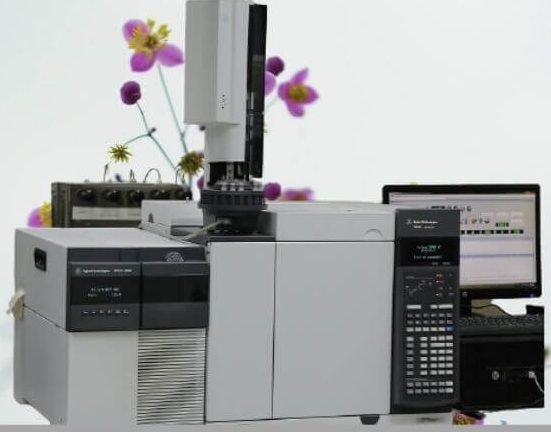Blog summary: Principle, Cost of Gas Chromatography-Mass Spectrometry (GCMS)

Chemicals and Reagents Standards including 3,4-dimethoxybenzoic acid asinternal standard, triethylamine methoxyaminehydrochloride were purchased from Sigma-Aldrich. N-Methyl-N-(tertbutyldimethylsilyl)trifluoroacetamid(MTBSTFA) + 1% tert-butyldimethylchlorosilane was provided from Thermo Scientific (Bellefonte, PA, USA).Toluene, diethyl ether, ethyl acetate, and sodium chloride(pesticide grade) were obtained from Kanto Chemical(Chuo-ku, Tokyo, Japan).
All other chemicals were of analytical reagent grade. Gas Chromatography-Mass Spectrometry Samples are analyzed using an Agilent6890N gas chromatograph interfaced to an Agilent 5975Bmass-selective detector (70 eV, electron ionization source).

The mass spectra were scanned in the mass range of 50-650 u at a rate of 0.99 scans/s. The temperatures of the injector, interface, and ion source were 260, 300, and 230oC, respectively.
An Ultra-2, cross-linked capillary column coated with 5% phenyl-95% methylpolysiloxane bonded phase (25 m×0.20 mm I.D., 0.11 mm film thickness, was used for all analyses. Helium was used as the carrier gas at a flow rate of 0.5 mL/min in the constant flow mode. Samples(1 μL) were introduced in split-injection mode (10:1), and the oven temperature was set initially at 100oC (2 min),then increased to 250oC at rate of 5oC/min and finally programmed to 300oC at rate of 20oC/min (5 min).
Sample preparation for measurements of organic acid sin cell culture media Control media, and culture media from L. pentosusK34 and P. lolliPL24 were used for experiments (n = 3). Aliquots of culture media (20 μL) containing IS (5 μg)were spiked to distilled water (1 mL) and reacted with methyl-hydroxylamine hydrochloride (1 mg) in alkaline condition at 60oC for 30 min for conversion into MO derivative.
The reaction mixture was then acidified to pH < 2with 10% sulfuric acid solution, saturated with sodium chloride, and extracted with diethyl ether (4 mL) followed by ethyl acetate (2 mL). After addition of TEA (5 μL), the combined extracts were evaporated under a gentle stream of nitrogen (40oC) to dryness. Toluene (20 μL) as the solvent and MTBSTFA (20 μL) as the silylation reagent were added to the residue, and the mixture was heated at 60oC for 30 min to form derivatives prior to analysis by GC-MS.Star symbol plotting.
The mean peak area ratios to IS of confirmed in the control media and culture media from L. pentosus K34 and P. lolliPL24 were normalized to the corresponding mean of those in the L. pentosus K34. Then normalized levels of 12OAs were plotted with lines radiating for star symbol plotting using Microsoft Excel (Microsoft, Redmond, WA), as described in previous report.
Sample Results of our Gas Chromatography-Mass Spectrometry (GCMS)
Currently, we have 3 units for our GCMS analysis. We advice that you see these samples to be certain of which to choose. Kindly follow link below.
Costs of our Gas Chromatography-Mass Spectrometry (GCMS)
You may see price Costs of our Gas Chromatography-Mass Spectrometry (GCMS) here for units one, two, and three to decide which works within your budget.
End Note:
This blog on the Principle and Cost of Gas Chromatography-Mass Spectrometry (GCMS) is written with snippets from Wikipedia. For details on our analysis, please go to our analytical helpdesk or write the chief analyst viz – research@allschoolabs.com. Thank you
 No products in the cart.
No products in the cart.